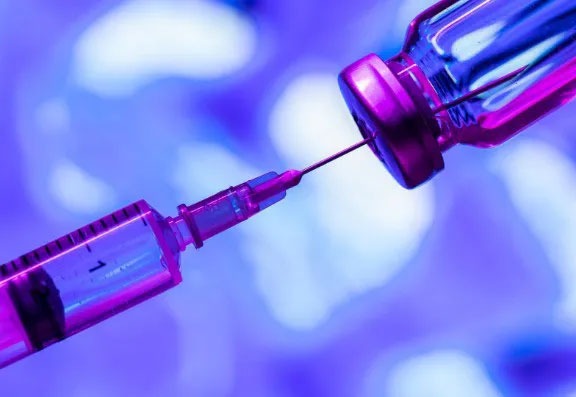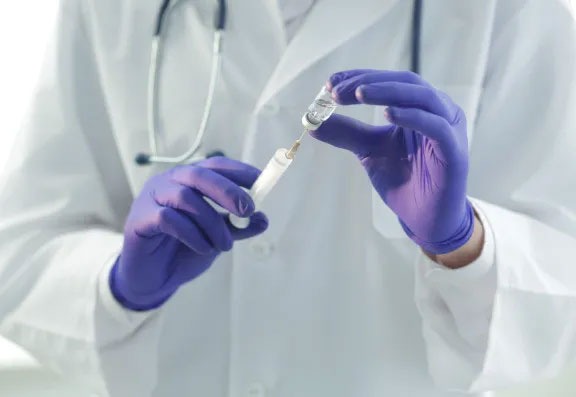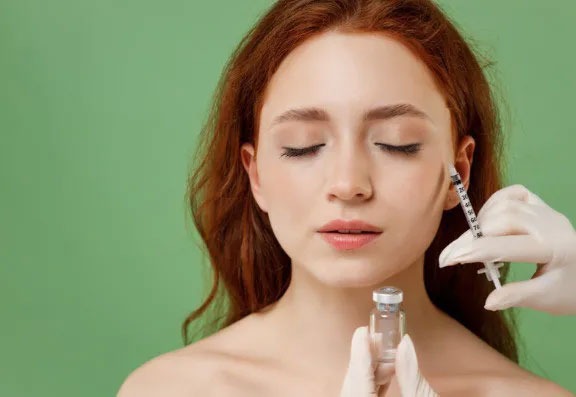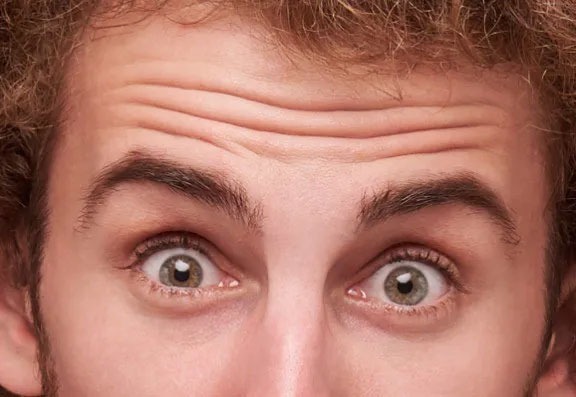Botox is the most popular cosmetic treatment in the world today and with good reason! It’s a safe and effective treatment with no downtime for lines and wrinkles formed by the facial muscles and it can last up to six months. However, as easy as it may sound, it's vital to find a knowledgeable and experienced medical practitioner to get natural-looking results.
In small doses, Botox can help reduce facial wrinkles and is most commonly used to treat forehead lines, severe frown lines and crow's feet. It also has been approved by the FDA (Food and Drug Administration) to treat certain medical concerns such as chronic migraines, excessive sweating (severe underarm sweating is known as hyperhidrosis), bruxism and overactive bladder.
You may be asking, is Botox right for me?
What exactly is it?
And what are the side effects?
To help you understand, we've put together everything you need to know about anti-wrinkle injections.
What Is Botox?
Botox is a brand name for botulinum toxin type A, a neurotoxic protein that is injected into specific muscles with a thin needle to reduce the appearance of wrinkles. It prevents the release of certain chemical signals and messengers coming from nerves which provide a temporary reduction in muscle contraction and movement.
Other brands of botulinum toxin available in the UK include Bocouture, Azzalure, Letybo and Nuceiva. New brands are emerging, but these are currently the most well-established and widely used.
They are all approved for cosmetic use in adults.

What Is Botox Made Of?
Botox derives from a commercially prepared form of Clostridium botulinum bacteria, which are normally present in different natural settings such as soil, forests and lakes,
Botulinum toxin is a purified protein that temporarily blocks nerve impulses. Injections are intended to relax the muscle and stop it from contracting, which will decrease wrinkles.
The amount of botulinum toxin injected depends on the brand used and the treatment area; it usually ranges from 5 units to 150 units per session.

Is Botox Safe?
Yes, Botox treatments are generally safe. However, as with any medical procedure, there are risks and side effects associated with injections.
You should be aware of these risks before considering treatment. A good practitioner will discuss all of these with you in detail before offering treatment.
Botox is a prescription-only medication that should be administered by a medically qualified injector such as a doctor, dentist or nurse.
How Should I Prepare for Botox Treatment?
It's important to follow instructions when preparing for Botox injections. Your practitioner will advise you of these during the consultation, but here are a few guidelines:
-
Remove makeup and jewellery from the area where you will be receiving injections.
-
Clean the skin with soap and water, if necessary.
-
Avoid alcohol, coffee and smoking for 24 hours before your appointment (these substances can increase bruising).
-
Avoid any NSAID’s such as Aspirin, Ibuprofen, Naproxen for two days before your appointment (these can increase risks of bleeding and bruise at the treated sites)
What Should I Expect During Botox Treatment?
During Botox, you can expect:
-
To have some numbing cream applied to your skin at the injection sites. This is not performed routinely but will help to minimise discomfort for anxious patients
-
For there to be a few small red dots where the injections were made that last anywhere from a couple of hours up until 2 weeks post-treatment – though these should not affect your daily activities or routines unless they bother you personally (in which case we recommend applying ice packs over them).

How Long Does Botox Treatment Take?
The treatment takes about 15-30 minutes, depending on the number of areas being treated and the severity of your concerns.
Side effects are rare but after Botox is injected into the muscle, they may include:
-
Headache: this is the most common side effect after the procedure and usually goes away in a few days.
-
Severe headache: if you have headaches that don't go away after the first week let your doctor know right away so they can help you find an effective treatment (such as taking over-the-counter pain medicine).
-
Swelling around your eyes: this can happen anywhere from one hour to two days after Botox injections and should go away completely within two weeks of having injections.
-
Allergic reactions: a small percentage of people develop an allergic reaction to a Botox injection. Symptoms can include redness, burning, itching or swelling at the injection site. If you experience a severe reaction after getting treatment, contact your practitioner immediately and seek medical attention.
-
Droopy eyelids: patients can develop droopy eyelids after getting injections of botulinum toxin in their forehead area (glabella).
-
Dry mouth: this side effect is more common among men than women and usually lasts only a few days following treatment, according to the American Society of Plastic Surgeons (ASPS). If your dry mouth continues beyond that point or becomes unbearable while it lasts, then you may need additional medication like lip balm or throat lozenges until it goes away completely but don't worry - this isn't permanent!
-
Dry eyes: if your eyes feel irritated and dry, you may require eye drops following treatment. Get in touch with your practitioner.
If at any point after your injections, you have difficulty breathing or double-vision you should contact a medical professional immediately.
After your procedure, you may experience some mild redness and swelling at the injection site. These symptoms are normal and typically fade within 24 hours.
To help minimise side effects, don't massage treatment areas, avoid direct sun exposure, hot and steamy environments (including hot tubs), vigorous exercise f and alcohol consumption for the next 24 hours
It normally can take up to two weeks for you to see the full effect of your injection, but you can start to see a difference starting from day 3-5 following your treatment most people are able to have repeated treatments every three to six months as needed.

How Long Does Botox Last?
On average, Botox will last for three to four months. However, this varies depending on the person, the dose administered, the strength of the muscle and where they have been treated.
For example, it can last longer in the muscles that are used less frequently (such as around your eyes) than in areas like your forehead, frown lines and around the mouth, as muscles tend to move more often in those locations.
It's important to keep in mind that Botox is not a permanent solution. This means that if you want ongoing results, you will need repeat treatments every few months.
Do Botox Injections Hurt?
Botox injections are generally considered quite painless and numbing cream or ice will help ease any pain from the injection.
A small number of people can experience a little soreness, swelling or bruising after their treatment, but this usually goes away after a few hours.
Botulinum toxin is not recommended for pregnant women or children under 18 years old.
It is regarded as a medical treatment and therefore people with certain health concerns are not suitable for the treatment.
Botox is not safe for you if:
-
You are pregnant or breastfeeding
-
You have certain neurological diseases
-
You have hypersensitivity to any component of the formulation
-
Have a generalised disorder of muscle activity (e.g. myasthenia gravis)
-
Have a bleeding disorder of any type
-
Are using or likely to use aminoglycoside antibiotics or spectinomycin
Any Botulinum toxin is not recommended during pregnancy.
Can You Get Botox Whilst Breastfeeding?
Most medical practitioners do not recommend having botulinum toxin injections while you are breastfeeding.

What’s the Difference Between Botox and Hyaluronic Acid (Ha) Dermal Fillers?
The major difference between the two is that botulinum toxin is a neurotoxin while dermal fillers are not.
A neurotoxin such as Botulinum toxin Type A is a substance that interrupts neurological communication between specific nerves and muscles thus temporarily preventing muscles from contracting and creating wrinkles.
In contrast, rather than blocking communication between nerves, HA dermal fillers will restore age-related volume loss and improve the appearance of facial wrinkles by supporting and strengthening skin directly under the wrinkles with hyaluronic acid molecules (the same ones naturally found within skin tissue). These molecules attract water back into cells underneath your skin's surface so that they plump up over time thanks to the extra hydration boost. They also help keep moisture locked inside.

Author: Anna Kremerov
Mrs Anna Kremerov is an award-winning Nurse Practitioner known for Aesthetic Medicine and non-surgical procedures. She is the Founder of Anna Medical Aesthetics, the only CQC registered aesthetic medical practice in Swindon and a MaiLi Centre of Excellence for the South West of England.
Anna and her team have built up an impeccable reputation with over a hundred 5-star patient reviews on Google and Trustpilot.
Anna has over 22 years of combined medical experience in Intensive Care, Woman Health, Primary Care and Aesthetics Medicine.
To view more blogs by Anna Kremerov please click here.
